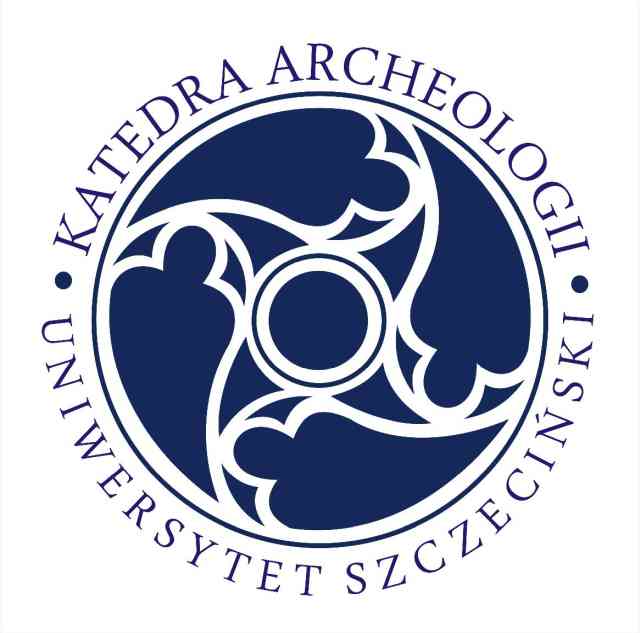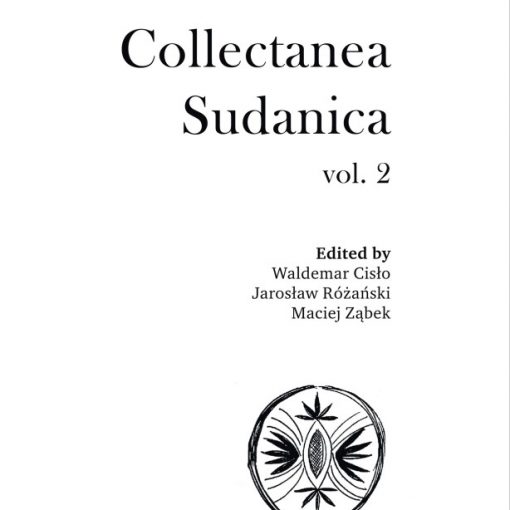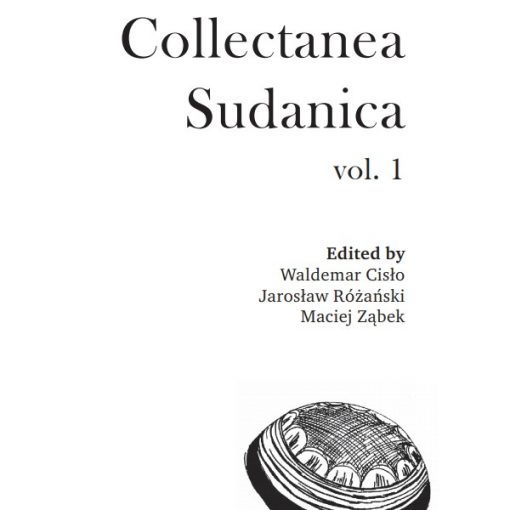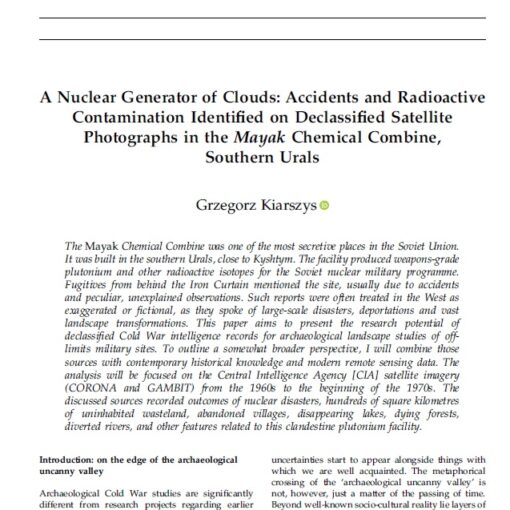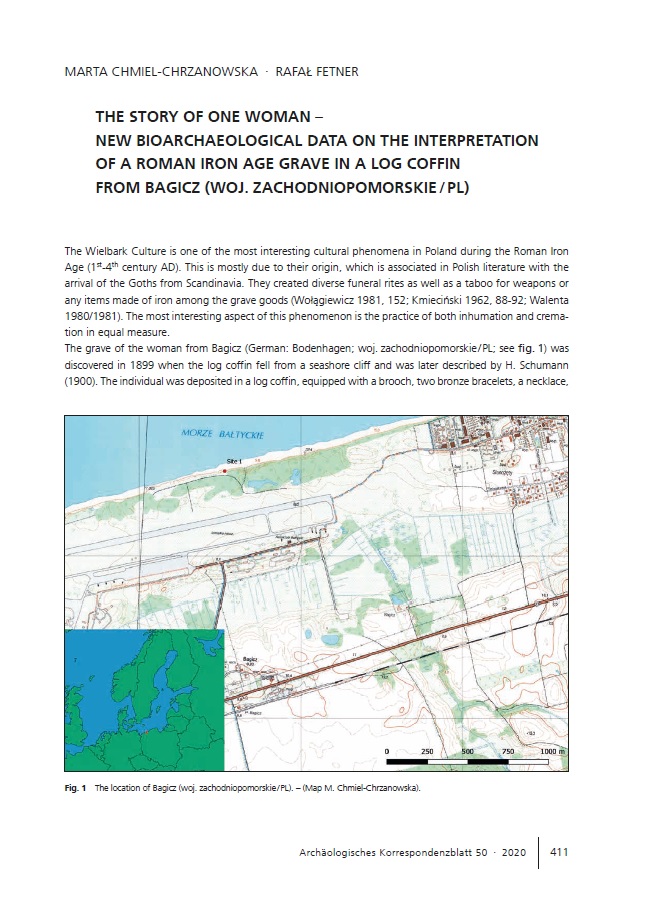 In 1899 a log coffin was discovered on the Baltic seashore in Bagicz. Human remains were radiocarbon dated to 160 cal BC – 50 cal AD, contrary to artefacts that date this burial to phase B2-B2/C1 (AD 110/120-160) of the Roman Iron Age. In this case a reservoir effect has to be taken into consideration. However, δ13CVPDB values do not support the marine fish consumption. The values are low and typical of a C3 based diet. High δ15NAIR values can be interpreted as either a high animal protein intake or stress. Significant consumption of freshwater fish can result in elevated δ15N values with moderate δ13C values and in aging the radiocarbon age of the individuals. The results also raise questions about the absence of millet and marine resources in the diet. Sometimes the difference in the diet can be explained by the non-local origin of the individuals. The provenance was studied by the analysis of the oxygen and strontium isotope ratio. The measured values most likely indicate a local origin. Another issue here would be the social position of the deceased. The careful interpretation of the cliff grave against the cultural background led us to assume that it had not in fact been a single grave. At this point, both grave goods and bioarchaeological results showed that we were dealing with a typical female member of the Wielbark Culture, rather than a »princess«.
In 1899 a log coffin was discovered on the Baltic seashore in Bagicz. Human remains were radiocarbon dated to 160 cal BC – 50 cal AD, contrary to artefacts that date this burial to phase B2-B2/C1 (AD 110/120-160) of the Roman Iron Age. In this case a reservoir effect has to be taken into consideration. However, δ13CVPDB values do not support the marine fish consumption. The values are low and typical of a C3 based diet. High δ15NAIR values can be interpreted as either a high animal protein intake or stress. Significant consumption of freshwater fish can result in elevated δ15N values with moderate δ13C values and in aging the radiocarbon age of the individuals. The results also raise questions about the absence of millet and marine resources in the diet. Sometimes the difference in the diet can be explained by the non-local origin of the individuals. The provenance was studied by the analysis of the oxygen and strontium isotope ratio. The measured values most likely indicate a local origin. Another issue here would be the social position of the deceased. The careful interpretation of the cliff grave against the cultural background led us to assume that it had not in fact been a single grave. At this point, both grave goods and bioarchaeological results showed that we were dealing with a typical female member of the Wielbark Culture, rather than a »princess«.
